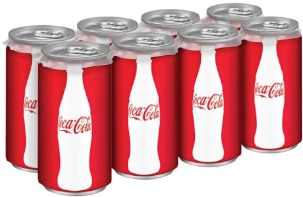




The companies that really know how to use customer media content—to create and deepen relationships with customers, not just to fulfill some checklist of sales and marketing materials—have a few things in common.
From our work and research, here are 10 traits of companies setting the benchmark for using customer media and content that works:
In the current Idea Email, we explore ten traits displayed by companies that use customer media and content that works to help customers discover their products and to build long term relationships with those who become buyers and users.
Here are six companies we believe are demonstrating some of those traits.

©ThinkStock
In the current Idea Email we once more explore the role of time in the use of effective marketing content. While the “journalist” in all of us may make us think the best information is what’s happening now, personal experiences throughout the day should help us recognize that the information we seek as we carry out our jobs or feed our passions or satisfy our curiosity often is found in content created outside the flow of today’s news.
Our point with this focus on the role of time is this: Often, the content your customers find most helpful may not be found on your blog or in the stream of your social media. Throughout the day, a customer may want to know if one of your products is waterproof and 30 minutes later, she may be curious about how to replace a broken part.
It’s easy to organize a website to be chronological. It’s a bit more difficult to develop a website in a topical or categorical framework that corresponds with your business focus. What is most challenging to the creator of a website, but most helpful to the users, is an organization built on a taxonomy of situations.
Your customers need help in some situation now. How easily they can find the answer they need or some type of help in making the best of the situation is the measure of your success.
Here are some simple examples of situations (you’ll need to translate them to your industry or market focus) that represent the types of needs where the definition of “timely content” is not related to when the content was created or posted, but is measured by how the content provides help to the customer at the precise time their situational need appears.
For marketers, this presents both challenges and opportunities.
 Hammock’s current Idea Email focuses on the approach the Coca-Cola Company has taken to radically pivot away from what most companies do with their corporate websites. Traditionally considered little more than a brochure website and repository for press releases and administrative content, Coke has transformed the site into an ever-changing and engaging “publishing model” site called Journey.
Hammock’s current Idea Email focuses on the approach the Coca-Cola Company has taken to radically pivot away from what most companies do with their corporate websites. Traditionally considered little more than a brochure website and repository for press releases and administrative content, Coke has transformed the site into an ever-changing and engaging “publishing model” site called Journey.
Here are some of the lessons learned from the first six months of the new approach, according to Coca-Cola executives, including Ashley Callahan, Coca-Cola manager of digital and social media communications, who made a presentation about Journey at last week’s Custom Content Council Conference. We also added some observations from our analysis of the site.
[Post by Rex Hammock]
Because Hammock has a long history of publishing print magazines while, simultaneously, serving as creators of digital media delivered to audiences via screens (starting back in the days of CompuServe and laserdiscs), I’m often asked about the future of print magazines – as in: Will print magazines still be around in the future?

Time is ticking away.
These questions typically spike whenever there is news involving closures or layoffs at once-powerful magazines like Time or Newsweek. or when a famous person like a Facebook co-founder sparks a lot of media coverage for buying a magazine like The New Republic.
Here’s my quick answer to the question, “Will print magazines be around in the future?”:
“Yes, but…”
For a much longer version of this answer – a version with predictions covering all types of print magazines – read on…
 Companies that earn the loyalty of customers are those that treat sales transactions as part of an ongoing journey, not as the finish line. Such companies focus on relationships that go beyond selling and focus on adding value to the products and services they offer their customers.
Companies that earn the loyalty of customers are those that treat sales transactions as part of an ongoing journey, not as the finish line. Such companies focus on relationships that go beyond selling and focus on adding value to the products and services they offer their customers.
As part of a series of blog posts we call Customer Media Basics, here are six things almost any business or organization, large or small, can start doing that will help turn customer transactions into long-term customer relationships:
1. Create better instructions and user manuals.
After investing so much in product development, marketing and sales, many companies — even ones selling us expensive products like TVs and cars — ignore the importance of the first message customers experience after they take ownership of the product. Even if you’re in a professional or business-to-business marketplace, the communication materials developed for the “on-boarding” period of any new product or service will set the tone and expectations for all that comes after that. When you treat such media as an afterthought, you’re communicating to the customer that you valued them more before the sale than after.

©Thinkstock
[This post is part of the series, The Basics of Customer Media and Content. A version of this post previously appeared on the blog of Rex Hammock, RexBlog.com]
There are two kinds of online content* that really matter to customers: 1. Chronological content (or what at Hammock, we call, Flow Content), the type of news and information that keeps us abreast of what’s happening now, real-time, that is of importance to us in our work or personal lives. 2. Contextual content (or what we call, Flow Content), the type of every-green content that provides us the understanding and knowledge when we need it.
Flow Content: This is the content that’s important because of its time-stamp. It is a never-ending stream and river of news and information that comes when the sender decides we should receive it, not necessarily when we expect or need it. It comes in the form of tweets, updates, email, text-messages, RSS feeds, etc. We can’t live without it. Often, it’s this kind of Flow Content that customers say over-loads them. That makes sense, as it over-loads all of us, especially if we don’t know how to organize it. In that case, we ignore it.